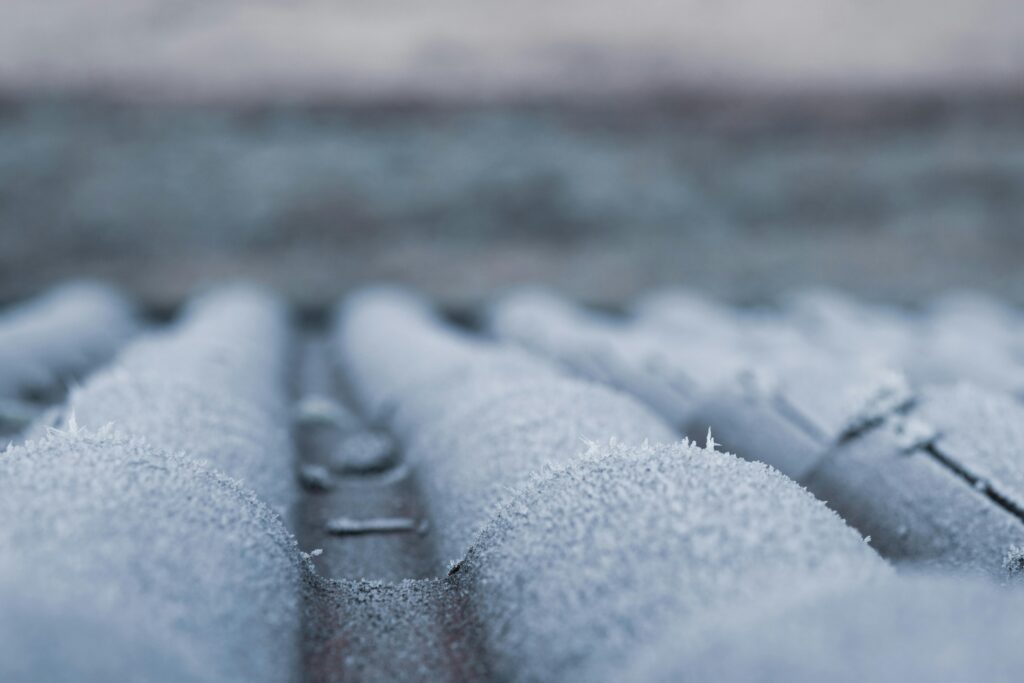Imagine it’s the middle of a rainy season, and your ceiling begins to drip. After weeks of postponing, you finally decide it’s time for a roof replacement. You hire a contractor, the work begins, but soon, subtle issues start to appear, shingles lifting, improper sealing, or worse, leaks creeping back in. What seemed like a straightforward fix turns into a costly headache. Unfortunately, this scenario is all too common. Many homeowners fall victim to common roof replacement mistakes that can turn their investment into a financial nightmare.
In this article, you’ll learn what these common roof replacement mistakes are and, more importantly, how to avoid them. From selecting the right materials to choosing a trustworthy contractor, understanding the pitfalls can save you both money and stress. Whether you’re tackling your first roof replacement or looking to prevent future problems, these insights will equip you to make informed decisions and protect your home effectively. Let’s explore the key errors homeowners make during roof replacement and how you can steer clear of them for a durable, worry-free roof.
Table of Contents
ToggleKey Takeaways
- Hire Wisely: Always vet contractors for proper licensing, insurance, and solid references to avoid shoddy workmanship.
- Inspect Thoroughly: Pre-replacement roof and attic inspections catch hidden damage—rot, mold, or poor ventilation—before installation begins.
- Choose the Right Materials: Match shingle type and underlayment to your climate and budget—investing upfront saves on premature repairs.
- Prioritize Timing & Prep: Schedule work in favorable weather, clear the site, and protect landscaping and vehicles to prevent damage and delays.
- Monitor & Document: Oversee installation quality (nailing patterns, flashing, cleanup), conduct a final walkthrough, and secure written warranties for peace of mind.
Preguntar a ChatGPT
Why Understanding Common Roof Replacement Mistakes is Crucial for Every Homeowner
Roof replacement is one of the most significant investments a homeowner can make. Your roof is not just the top covering of your house; it acts as the first line of defense against harsh weather conditions, ensuring the safety and comfort of your family. However, many homeowners, eager to fix an aging or damaged roof, often overlook essential details, leading to costly mistakes that could have been easily avoided. This is why understanding common roof replacement mistakes and how to avoid them is crucial.
What Are Common Roof Replacement Mistakes?
Common roof replacement mistakes refer to errors made during the planning, selection, and installation of a new roof. These mistakes can range from choosing the wrong materials, hiring unqualified contractors, to ignoring proper ventilation needs. Such errors not only compromise the integrity of your roof but can also lead to premature wear, leaks, and increased energy bills.
According to a study by the National Roofing Contractors Association (NRCA), nearly 30% of roof replacements experience issues within the first five years due to installation errors or improper material selection. This statistic highlights how widespread and costly these mistakes can be.
Why Is It Important to Avoid These Mistakes?
Avoiding common roof replacement mistakes saves you money, time, and stress in the long run. A well-installed roof enhances your home’s value, boosts energy efficiency, and provides peace of mind during storms or extreme weather.
Moreover, the wrong decision might require premature repairs or even a complete reroofing much sooner than expected. For example, installing inexpensive but unsuitable shingles in a humid region could lead to mold growth and shingle deterioration in a few seasons, significantly reducing your roof’s lifespan.
A Real-Life Success Story
Consider the case of Sarah, a homeowner from New Jersey, who was eager to replace her old roof before the winter months. Initially tempted by a contractor offering a low price, she did her homework and discovered several red flags online about the contractor’s reputation. She then hired a licensed professional who assessed her home’s needs thoroughly.
Instead of going for the cheapest materials, Sarah chose high-quality asphalt shingles suitable for her climate and insisted on proper attic ventilation. The roof replacement went smoothly, finished on time, and has held up impeccably for over five years now, saving her thousands in potential repairs and energy costs.
Sarah’s story illustrates how understanding and avoiding common roof replacement mistakes can transform what seems like a daunting task into a successful investment in your home’s future.
In the next sections, we’ll dive deeper into the most frequent errors homeowners make during roof replacement and provide actionable tips to help you steer clear of these pitfalls. By the end, you’ll be equipped with the knowledge to make informed decisions and ensure your roof replacement is a smooth, rewarding process.
How to Avoid Common Roof Replacement Mistakes Step by Step
Replacing a roof is a major investment and an essential part of home maintenance. However, many homeowners fall into common traps that lead to costly errors. To ensure your roof replacement goes smoothly and lasts for years to come, follow this detailed step-by-step guide. By understanding each phase and common pitfalls, you can confidently navigate the process and avoid those costly mistakes.
Step 1: Research and Choose the Right Roofing Contractor
One of the biggest mistakes in roof replacement is rushing to hire the first contractor you find. To avoid this:
– Check credentials: Verify licensing, insurance, and certifications.
– Read reviews: Look for feedback on platforms like Google, Yelp, and the Better Business Bureau.
– Ask for references: Speak with past customers to gauge workmanship and reliability.
– Get multiple quotes: Compare detailed estimates, not just prices.
Selecting a reputable contractor helps avoid issues like poor installation, delays, and inflated costs.
Step 2: Inspect Your Existing Roof Thoroughly
Before any work begins, a comprehensive inspection is crucial:
– Assess the structure: Look for rot, mold, or water damage underneath the shingles.
– Check attic ventilation: Proper airflow extends roof life and prevents moisture buildup.
– Identify hidden problems: Issues such as damaged flashing or inadequate underlayment might require immediate attention.
Ignoring this step can lead to unexpected expenses later and diminish the effectiveness of your new roof.
Step 3: Choose the Right Roofing Materials
Not all materials are created equal, and picking the wrong type can cause premature failure. Consider:
– Climate suitability: For example, asphalt shingles work well in most areas, but metal roofing fares better in heavy snowfall regions.
– Budget vs. durability: Higher upfront costs often mean longer warranties and less frequent replacements.
– Aesthetic appeal: Match your home style and boost curb appeal.
Discuss material options with your contractor to select the best fit and avoid costly replacements down the line.
Step 4: Schedule the Roof Replacement at the Right Time
Timing matters when replacing a roof. Avoid:
– Bad weather: Rain, wind, or extreme temperatures can delay work or cause subpar installation.
– High demand seasons: Summer and early fall are peak times; book well in advance to avoid price hikes and limited availability.
– Roof warranty expiration: Starting the project before your old roof’s warranty expires can save money if defects appear.
Proper scheduling minimizes disruptions, ensures quality, and keeps your home safe throughout the project.
Step 5: Prepare Your Home and Communicate Clearly
Prepare your home to protect surroundings and maintain safety:
– Move vehicles: Park cars away from the house to prevent damage from falling debris.
– Clear the yard: Remove patio furniture, decorations, and cover plants near the house.
– Inform neighbors: Give advance notice to avoid surprises and maintain good relations.
– Establish communication: Set expectations for daily progress updates and address questions promptly.
Clear communication minimizes stress and prevents misunderstandings during the roofing process.
Step 6: Monitor the Installation Process Closely
Even with a trusted contractor, oversight is necessary:
– Verify material delivery: Ensure the materials match your order in quantity and quality.
– Observe workmanship: Look for secure nailing patterns, proper flashing installation, and adequate ventilation.
– Check debris removal: Confirm the crew cleans nails and scraps daily to avoid injury.
By staying involved, you catch problems early before they escalate into costly repairs.
Step 7: Conduct a Final Inspection and Secure Documentation
Once the job is complete:
– Review the work: Check for uniform shingles, no visible damage, and proper sealing around chimneys and vents.
– Request warranties: Obtain written warranties on both materials and labor.
– Keep receipts and contracts: Store all paperwork for future reference or insurance claims.
A thorough final review ensures you get full value and protection from your roof replacement investment.
By following these detailed steps, you’ll steer clear of the most common roof replacement mistakes and make your home safer and more beautiful. Remember, preparation and vigilance are your best allies for a successful roofing project.
Using this step-by-step method, you’ll avoid pitfalls such as hiring unreliable contractors, choosing unsuitable materials, or failing to prepare, ensuring your new roof provides lasting protection and peace of mind.
Tips for Avoiding Common Roof Replacement Mistakes 🏠🔨
✅ Choose the Right Contractor:
Hire a licensed and insured roofing professional with solid references. Avoid going for the cheapest option to ensure quality work.
❌ Don’t Ignore Weather Conditions:
Avoid scheduling your roof replacement during rainy or windy seasons, as bad weather can delay the project and damage materials.
💡 Inspect the Roof Decking:
Before installation, have your contractor inspect the decking for rot or damage. Replacing damaged decking prevents future leaks and structural issues.
✅ Use Quality Materials:
Invest in durable, high-quality roofing materials specifically suited to your climate to extend the roof’s lifespan.
❌ Avoid Skipping the Permit Process:
Getting the necessary permits is crucial. Skipping this step can result in fines or problems when selling your home.
💡 Ensure Proper Ventilation:
Proper attic ventilation helps regulate temperature and moisture, preventing ice dams and mold growth.
✅ Don’t Overlook Flashing and Sealants:
Make sure flashing around chimneys, vents, and skylights is properly installed and sealed to prevent leaks.
❌ Avoid Inadequate Cleanup:
A thorough cleanup after replacement is crucial. Leftover nails and debris pose safety hazards and can damage property.
💡 Request a Written Warranty:
Always get a clear warranty covering materials and labor to protect your investment.
✅ Communicate Clearly with Your Contractor:
Discuss timelines, budget, and expectations upfront to avoid misunderstandings.
By following these practical tips, you’ll avoid common pitfalls and ensure your new roof stands strong and lasts for years to come!

Key Concepts
When delving into the topic of common roof replacement mistakes, it’s vital to grasp several foundational ideas that illuminate why these errors occur and how they impact the longevity and performance of a roof. Let’s explore these concepts to build a rich understanding of roof replacement pitfalls and their consequences.
Understanding the Roof as a System
A roof isn’t just a flat surface or a collection of shingles placed haphazardly atop a home. Think of it like the skin of a living organism, complex, layered, and designed to protect vulnerability beneath. Each part of the roof, from the decking to the underlayment and seals, plays an integral role. Missing the importance of this system approach often leads to missteps during replacement.
Imagine if a watchmaker replaced one gear without considering how it meshes with others. The watch might seem fine at first but soon loses accuracy or stops working altogether. Similarly, focusing purely on surface-level fixes like shingle appearance neglects underlying components that, if damaged or improperly installed, can cause leaks or structural failure.
The Cost of Short-Term Thinking
Roof replacement is often viewed through the lens of immediate expenses or aesthetics. Homeowners might prioritize saving money upfront or choosing the cheapest materials. This short-sighted approach echoes the tale of the gardener who plants seeds without nurturing the soil. You might see quick blooms, but the lack of foundational care can result in withering later.
In roofing, opting for substandard materials or rushing installations without addressing hidden damage can snowball into costly repairs. The roof, while resilient, demands respect for its lifecycle and environmental challenges like weather, temperature fluctuations, and wear. Recognizing this longevity perspective helps underscore why certain mistakes, though seemingly minor, are actually foundational errors with expansive consequences.
Misjudging Environmental Factors
Roofs battle a continuous barrage from nature, rain, wind, sun, frost, and debris. Each environment crafts unique challenges shaped by geographic and climatic conditions. A roof in a humid coastal region faces distinct threats like salt corrosion and mold, unlike a roof in a temperate mountainous area subjected to snow and ice buildup.
Ignoring this reality is akin to dressing for a winter storm wearing only a light jacket. The roof needs tailored materials and installation techniques informed by environmental context. Missteps happen when homeowners or contractors apply a one-size-fits-all mindset, overlooking regional nuances that dictate the choice of ventilation, insulation, and waterproofing strategies.
The Role of Structural Integrity
The foundation beneath roofing materials is often out of sight and out of mind, yet it’s critically important. The decking and framework support the entire roof system’s weight and integrity. Even the best shingles cannot compensate for structural weaknesses or rot.
Consider the analogy of building a skyscraper on unstable ground. No matter how sophisticated the façade, without a solid foundation, the structure is vulnerable to collapse. Similarly, a roof replacement that neglects to thoroughly inspect and reinforce the substructure risks recurring damage and eventual failure, hidden dangers that can escalate repair costs dramatically.
The Myth of DIY Success
In the realm of home improvement, a wave of do-it-yourself enthusiasm is powerful and inspiring, but it’s also fraught with risk, especially when dealing with something as critical as roof replacement. Roofing is a specialized craft requiring precise measurements, knowledge of materials, and safety protocols. Attempting to apply amateur fixes here parallels patching a dam with tape during a flood, temporarily effective at best but doomed without expert intervention.
Understanding this myth highlights the limitations of skillsets and why some mistakes stem from overconfidence or misunderstanding of roofing intricacies. It emphasizes the importance of professional insight to avoid fundamental errors with lasting impact.
Balancing Aesthetics and Functionality
There’s an inherent tension between how a roof looks and how well it performs. While curb appeal is undeniably important, often influencing home value and neighborhood harmony, the roof’s principal role is protection from external elements.
This balance can be visualized as a tailored suit: it must fit perfectly and look good, but if the fabric isn’t weather-resistant or the seams aren’t tightly stitched, the wearer won’t stay dry in the rain. Likewise, choosing visually striking roofing materials without considering durability, compatibility, or climate suitability can lead to premature wear or leaks despite initial beauty.
By peeling back these layers of meaning and context around the common mistakes in roof replacement, we equip ourselves with a richer appreciation for why certain errors persist and how crucial thoughtful, systemic, and informed approaches are to safeguarding one’s home. Recognizing the roof’s complexity, environmental challenges, structural underpinnings, and the interplay between appearance and function sets the stage for deeper insights into avoiding pitfalls in this essential aspect of home maintenance.
Frequently Asked Questions about Common Roof Replacement Mistakes and How to Avoid Them
❓ What are the most common roof replacement mistakes?
The most frequent mistakes include hiring unlicensed contractors, neglecting proper ventilation, choosing low-quality materials, and skipping thorough inspections before and after installation.
❓ How can I avoid hiring an unreliable roofing contractor?
Always verify licenses and insurance, check online reviews, ask for references, and get detailed written estimates before hiring a roofing contractor.
❓ Why is proper ventilation important during roof replacement?
Proper ventilation prevents moisture buildup, extends the life of your roof, and helps regulate indoor temperature, reducing energy costs and avoiding mold growth.
❓ Can I replace my roof without inspecting the underlying structure?
No. Inspecting the roof deck and supporting structures is critical to identify hidden damage that could compromise the new roof’s durability if left unrepaired.
❓ How do I ensure I choose the right roofing material?
Consider your climate, budget, and the roof’s slope. Research material lifespan and maintenance needs, and consult with a roofing expert to select the best option for your home.



One Response